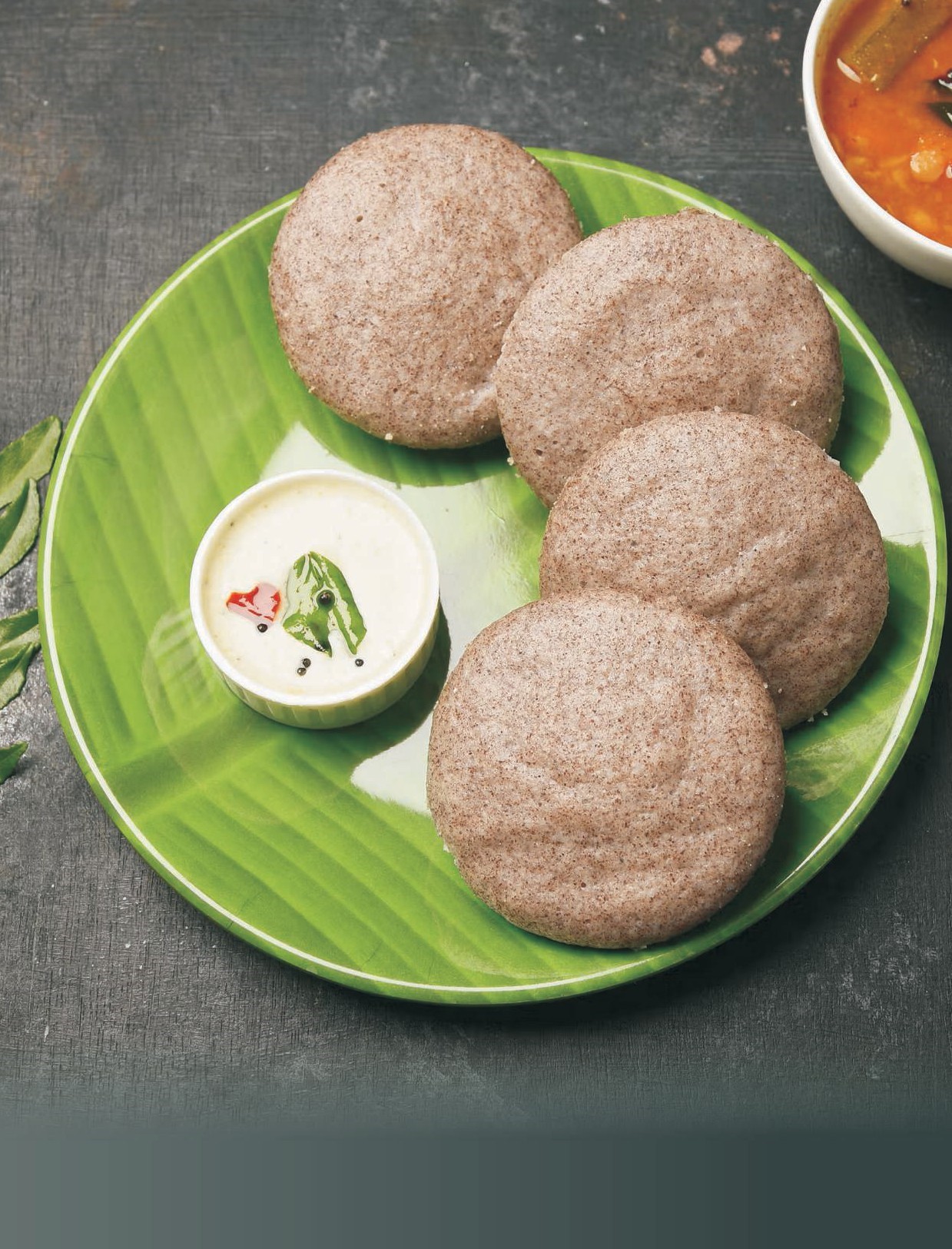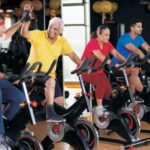Diabetes Mellitus, a pandemic by now, is affecting and afflicting people around the world. The number of people with Diabetes and the projected complications are
mind-boggling, enormous and are strenuous on health care systems. People suffering from morbid chronic complications, early mortality and loss of productivity are incalculable.
With the advancement in science and technology, several new medicines and insights into the causes of Diabetes and its complications have been discovered but then all these advances are unable to fully control the pandemic. Its incidence has risen enormously. Previously considered as a disease of the rich, it is now also commonly seen in people below the poverty line especially in rural India. To prevent India from continuing as the Diabetes capital of the world, concrete steps to prevent and effectively manage Diabetes must be taken.
Yoga – a tool of lifestyle management
Lifestyle intervention during an early stage of Diabetes is critical to good Diabetes management and avoiding later complication. For those with Diabetes or pre-Diabetes, adopting a regular yoga routine in addition to other healthy lifestyle habits can provide relief from diabetic symptoms and even help avert complications.
Diabetes is a disease affecting the pancreas. Other organs important in glucose metabolism are liver, intestines, muscles and fat (especially central fat). Regular yoga practice not only builds strength and flexibility; it aids circulation, fortifies the lungs and heart, calms the mind, reduces stress, helps you lose weight and keeps the body in balance. It is considered more beneficial for people with Type 2 Diabetes although there have been positive results for people with Type 1 Diabetes too.
Central obesity, stress and sedentary lifestyle increase the propensity for Type 2 Diabetes. Diagnosis for these may seem to carry the weight of a life sentence, but for many people, adopting key lifestyle changes, such as a healthier diet and exercise, can help manage, reduce, and even eliminate diabetic symptoms. Even those who are at a more advanced stage of the disease can find a greater degree of comfort and physical function by incorporating healthy practices into their routine.
What is Yoga?
Yoga, an ancient Indian philosophy, science and art, propounded by sage Patanjali about 5,000 years ago deals with human life, sufferings and the means to eradicate them to attain emancipation. The word Yoga has been derived from the Sanskrit word Yuj i.e yoke, bind or union and here it indicates the union of individual and cosmic consciousness respectively. It is a universal subject and can be practised by all.
Yoga and Diabetes
Customarily, walking for 45 minutes or so, five times a week is recommended as one of the most important practice by many Diabetes associations, which ignore its sensory limitations because often Diabetics suffer from heart ailments too, which may not permit walking for long. Osteoarthritis of knee and hip may also hinder this practice. Other than that Retinopathy (reduced vision), Diabetic foot (neuropathy, peripheral vascular disease, ulcers, calluses, etc.) may restrict walking totally. For such people, asanas are the best answers to all their problems. They help to:
. Regenerate and restore pancreatic cells by abdominal stretching.
. Relax muscles, improve blood circulation in muscles and enhances muscular development. This lowers the risk of problems like frozen shoulder.
. Improve heart health
. Lower blood pressure
. Reduce bodyweight
. Rejuvenates the mind helping people with Diabetes effectively deal with depression and low self-esteem. Asanas affect the mental sheath (Manomaya Kosa) and eliminate such feelings.
. Improve appetite
. Improve insulin sensitivity which helps lower blood sugar levels.
. Stimulate pancreas by enhancing circulation in the pancreas and empowers its capacity to produce insulin. Many asanas squeeze and compress the abdomen and help to stimulate the pancreatic secretions which make more insulin to flow into the blood.
. Maintain proper foot shape and arches which helps minimize diabetic foot injuries.
. Improve bladder control
. Improve kidney health
Yoga relaxes you and, by relaxing, it heals. That’s not just theory. Because the deep breathing, the stretching, the movements that release muscle tension, the relaxed focus on being present in your body all these initiate a process that turns the fight- or-flight system off and the relaxation response on, which has a dramatic effect on the body. And especially those battling Diabetes would understand how much they need it, once they realise its benefits like the heartbeat slows, respiratory problems decrease, blood pressure normalizes and that the body seizes this chance to turn on the healing mechanisms. Although it takes time to fall in place, but when it does, it’s an eye-opener. So better indulge in it to understand it, because understanding is the first step.
 n
n
Yoga asanas for Diabetes
Ardha Matsyendrasana
(Sitting half spinal twist pose)
 n
n
Benefits:
This yoga asana massages the abdominal organs, increases the oxygen supply to lungs and makes the spine supple. It also helps calm the mind and improves blood flow to the spine.
How to do it
1. Sit up with the legs stretched out straight in front of you, keeping the feet together and the spine erect.
2. Bend the left leg and place the heel of the left foot beside the right hip (optionally, you can keep the left leg straight).
3. Bend the right leg, bringing the right foot near the left buttock. Keep the outside edge of the right foot in contact with the floor.
4. Place the left hand on the right knee and the right hand behind you.
5. Twist the waist, shoulders and neck in this sequence to the right and look over the right shoulder.
6. Keep the spine erect.
7. Hold and continue with gentle long breaths in and out.
8. Breathing out, release the right hand first (the hand behind you), release the waist, then chest, lastly the neck and sit up relaxed yet straight.
9. Repeat to the other side.
10. Breathing out, come back to the front and relax
Vakrasana (Twisted pose)
 n
n
Benefits:
This yoga asana tones all the organs in the abdomen. It improves digestion and removes constipation.
It is also good for the liver, adrenal glands and pancreas. It gives a good twist to the spine and makes the spine flexible. Those who cannot practice Ardha Matsyendrasana should practice Vakrasana, which is an easier twisting pose. It removes the fat around the waist and also reduces chronic back and shoulder pain.
How to do it
1. Sit on the floor with legs stretched out and hands resting on the floor by the side.
2. Bend your left leg with sole of the feet resting on the floor. Let the right leg remain straight on the floor.
3. Twist your trunk towards the left and bring your right hand over your left leg.
4. Place the right hand over the left toe or you can hold the left ankle with your right hands. Place the left hand behind, to support the weight of the body. The neck is twisted to the left, in line with the trunk.
5. Breathe normally in this position. Maintain this final position for 30 seconds or as long as you are comfortable.
6. To release the pose, release the hands, twist to the right and assume the normal forward-looking position. Bring the hands to the side of the body, resting on the floor. Lower the left leg and let it rest on the floor.
Viparit Karani (Legs up the wall pose)
 n
n
Benefits:
This yoga asana helps to stimulate the pancreas and other abdominal organs and aids in significant improvement in blood glucose control.
How to do it –
1. Lay down flat on your back in the supine position.
2. Bring your buttocks closer to the wall as much as you can and breathe in slowly and deeply.
3. Keep both of your legs straight and rest them on the wall.
4. Bend your toes towards your body until you feel the stress on your hamstrings.
5. Extend both of your hands on either side of your body.
6. Stay in this position and breathe for at least 2-3 minutes.
Paschimottanasana
(Seated forward bend pose)
 n
n
Benefits:
The two-legged forward bend massages and tones the abdominal and pelvic organs and stretches the lower back, hamstrings and hips. It also tones the shoulders. This yoga posture helps balance the prana in the body and also calms the mind.
How to do it
1. Sit up with the legs stretched out straight in front of you, keeping the spine erect and toes flexed toward you.
2. Breathing in, raise both arms above your head and stretch upward.
3. While breathing out, bend forward moving toward the toes. Keep the spine erect focusing on moving forwards towards the toes, rather than down towards the knees.
4. Place your hands on your legs, wherever they reach, without putting any additional force.
5. Breathing in, lift your head slightly and lengthen your spine.
6. Breathing out, gently move the navel towards the knees.
7. Drop your head down and breathe deeply for 20-60 seconds.
8. Stretch the arms out in front of you.
9. Breathing in, with the strength of your arms, slowly come back up to the sitting position.
10. Breathe out and lower the arms.
Trikonasana
(Triangle pose)
 n
n
Benefits:
This yoga asana helps in reducing the damaging effect of diabetes on kidneys. This pose also helps in better digestion and absorption in the body.
How to do it
1. Position your legs 3 feet apart in a standing position, turn your right toes to the right wall and keep your left toes slightly inwards. Breathe in and press the left hips out to the left as you slide both of your arms to the right parallel to the floor.
2. Breathe out and swing only the arms, raising your left arm and resting your right hand against your right leg, with the palms facing front.
3. Keep your legs strong, press into the feet, and pull up the knee caps. Bring your arms into one straight line with the shoulder piled on top of each other, try to reach the fingertips away from each other. Press the left hip forward and the right hip backwards.
1. Take a breath and hold for 3-6 breaths.
2. Breathe in and reach the raised hand up towards the ceiling as you touch down your feet using the whole body to lift back into the starting position.
3. Repeat this pose on the other side.
Surya namaskar
.jpg) n
n
Benefits:
Surya namaskar combines the twelve asanas (yogic postures), breath, and mantras (Vedic hymns), in a sequence. It helps maintain heart health and stimulates the nervous system. It stretches, flexes and tones muscles, enhances cognitive functions and strengthens the immune system. It aids weight loss, improves overall health and relaxes the mind
How to do it
Step 1 – Pranamasana (Prayer pose)
. Stand with your feet together, keeping an equal amount of weight on each of them.
. As you breathe in, lift both your arms from sideways.
. Exhale and join your palms together in front of the chest in prayer position.
Benefits: Pranamasana helps maintain the balance of the body and relaxes the nervous system.
Step 2 – Hastauttanasana (Raised arms pose)
. As you inhale, lift the arms and keep the biceps close to the ears.
. Push the pelvis slightly forward.
. Focus on the stretch of the whole body,
from the heels up to the tips of the fingers.
Benefits: Hasta Uttanasana stretches and tones the muscles of the abdomen. It expands the chest resulting in the full intake of oxygen.
Step 3 – Hastapadasana (Standing forward bend)
. Breathing out, bend forward from the waist keeping the spine erect.
. As you exhale completely, bring the hands down to the floor beside the feet.
Benefits: Hasta Padasana makes the waist and spine flexible. It stretches the hamstrings. It opens the hips, shoulders, and arms.
Step 4 – Ashwa Sanchalanasana (Equestrian pose)
. As you inhale, take your right leg back, pushing it as far back as possible.
. Rest your right knee to the floor.
Benefits: Ashwa Sanchalanasana strengthens the leg muscles. It makes the spine and neck flexible. it is good for indigestion and constipation.
Step 5 – Dandasana (Stick pose)
. As you inhale, move your left leg back and make your body straight.
. Keep your arms perpendicular to the floor.
. Look straight ahead keeping your back straight as well.
Benefits: Dandasana strengthens the arms and back, improves posture, stretches the shoulders, chest, and spine and calms the mind.
Step 6 – Ashtanga Namaskara (Salute with eight parts or points)
. Gently bring your knees down to the floor and exhale.
. Take the hips back slightly, slide forward, rest your chest and chin on the floor.
. Raise your posterior a little bit. The two hands, two feet, two knees, chest and chin (eight parts of the body) should touch the floor.
Benefits: Ashtanga Namaskara enhances the flexibility of the back and spine. It strengthens the back muscles and reduces tension and anxiety.
Step 7 – Bhujangasana (Cobra Pose)
. As you inhale, slide forward and raise the chest and look up at the ceiling.
. Make sure that you bend your elbows and the shoulders are not close to the ears.
. Your back should form an arc from the navel region and both the legs should be together.
. Look up at the ceiling.
Benefits: Bhujangasana stretches the shoulders, chest, and back. It increases flexibility and elevates the mood.
Step 8 – Adho Mukha Svanasana (Downward facing dog pose)
. Breathing out, lift the hips and the
tailbone to bring the body into an inverted ‘V’ pose.
. Both your knees along with your back
should be straight.
Benefits – Adho Mukha Svanasana strengthens the muscles of the arms and legs. It gives a very good stretch on the hamstrings and increases blood flow to the spinal region.
Step 9 – Ashwa Sanchalanasana (Equestrian Pose)
. Breathing in, bring the right foot forward in between the two hands.
. The left knee goes down on the floor.
Press the hips down and look up.
. Ensure that the right foot is perpendicular to the ground and is exactly in between the palms.
Benefits: Ashwa Sanchalanasana tones the abdominal organs and adds flexibility to leg muscles.
Step 10 – Hasta Padasana (Standing Forward Bend)
. As you exhale, shift your left foot forward between the right leg and left palm.
· Keep both the palms on the floor and try to touch the knees with your nose.
. Try straightening both the knees, a little more than what you feel
comfortable.
Benefits: Hasta Padasana stretches the hamstrings and opens the hips, shoulders and arms.
Step 11 – Hastauttanasana (Raised arms pose)
. As you inhale, lift your arms and spine.. Slightly bend backwards and keep the biceps close to the ears.. Push the pelvis slightly forward.
body, from the heels up to the tips of the fingers.
. Make sure to focus on stretching up from fingers rather than trying to bend backwards.
Benefits: Hasta Uttanasana stretches and tones the muscles of the abdomen. It expands the chest resulting in the full intake of oxygen.
Step 12 – Tadasana (Mountain Pose)
. As you exhale, first straighten the body, then bring the arms down.
. Relax in this position and observe the sensations in your body.
. This completes one set of Surya Namaskar.
Benefits: Tadasana improves posture, strengthens thighs, knees, and ankles, firms abdomen and buttocks and reduces flat feet.
Pranayama
 n
n
Pranayama (Prana means life force, Ayama means expansion) means expansion of the life force and is done with the help of the breath, but life force and breath are separate. In pranayama, the life force is accessed using the breath as a tool.
Pranayama, the practice of using the breath to soothe the fluctuations of “Chitta” or the active thinking mind, invites you to be mindful of life’s most important function: breathing. According to the American Lung Association, we normally take 20,000 breaths a day without it capturing our attention.
.Anulom vilom
(alternate nostril breathing)
This is found useful in Diabetes as alternate nostril breathing has calming effects on the nervous system, facilitating homeostasis (internal equilibrium in the function of all the systems). This manages stress levels.
How to do it
Close the right nostril and inhale with the left nostril. Then immediately close the left nostril and exhale with the right nostril. In this way try breathing slowly and deeply by changing the nostrils.
. Kapalbhati (one-time inhale; exhale 30 to 50 times quickly)
This is extremely beneficial. It stimulates the pancreas to release insulin.
Pranayam makes the mind calm, thus balancing the interaction between the pituitary gland and the pancreas.
How to do it
Sit down on the floor in a comfortable cross-legged position. Take a deep breath and then exhale quickly, making a sound. Always remember while doing Kapalbhati, you have to forcefully and quickly exhale and slowly and deeply inhale. Continue doing this for 10 times and then release.
Note: Please consult your doctor before starting or modifying your exercise routine.













